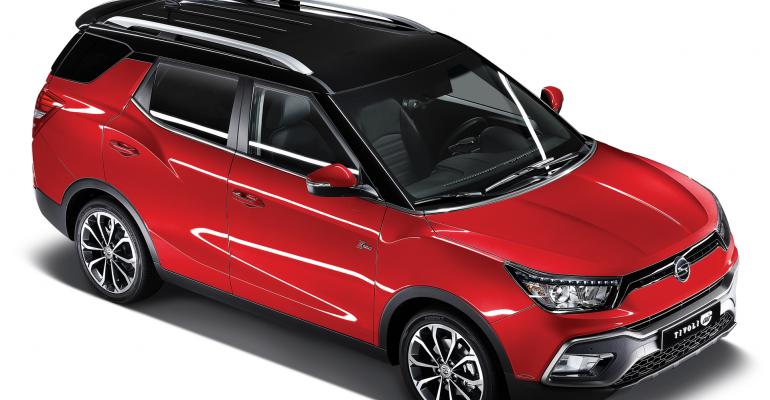What’s a Ssangyong?
Americans may find out later this decade, when one of the smallest of Korea’s domestic automakers plans to enter the U.S. market.
CEO Choi Johng-sik makes the announcement at an event marking this week’s domestic sales launch of the Tivoli Air, a long-body compact SUV. But it isn’t completely consistent with Chairman Pawan Goenka’s statement to reporters that while Ssangyong considers the U.S. a viable market, currently it is more interested in entering China.
Goenka’s statement caught Ssangyong senior staff in Seoul off-guard; they plan to present their latest proposal for venturing into the U.S. at a board of directors meeting later this month.
Goenka’s preference for China may carry more weight. He is executive director of Indian industrial conglomerate Mahindra & Mahindra, which owns 72.9% of Ssangyong’s stock. He also is president of Mahindra’s global automotive operations.
Ssangyong currently exports vehicles to China where they are marketed through a third-party distributor. However, the automaker sold only 2,460 vehicles in China in 2015, down nearly 80% from a high of 11,976 in 2014.
Goenka notes Ssangyong is paying high import tariffs in China, which curtails sales by making the vehicles more expensive. Prices would come down if the automaker could gain a foothold there through a contract manufacturer or joint venture.
At the launch of the Tivoli Air Choi says Ssangyong plans to enter the U.S. market when it launches the SIV-2, a B-segment CUV that debuted March 2 at the Geneva auto show. That would be around the end of 2019 or early in 2020, he says.
The CEO says the company will make thorough preparations during the next three to four years before tackling the U.S. He acknowledges Mahindra & Mahindra once launched a small pickup-truck in the U.S. that didn’t meet with success.
The 7-seater Tivoli Air is available with optional automatic fulltime all-wheel drive. Its many high-tech features include electronic stability control, tire-pressure monitoring, rearview camera, 7-in. (17.5-cm) display screen, standard 6-speaker sound system, ventilated front seat, heated steering wheel, adjustable heated seating in the second row and standard dual-zone automatic air conditioning.
The body is composed of 71% extra-high-strength steel.
Eight colors are available with contrasting roof color or solid color if the sunroof is ordered.
Pricing in Korea runs from 19.5 million to 24.5 million won ($16,000-$20,000), depending on options.
The Tivoli Air will launch next month in overseas markets where the original Tivoli already is sold, with special focus on Eastern Europe, a spokesman tells WardsAuto. Export shipments to those markets begin this month.
The global 2016 sales target for the Tivoli Air is 20,000 units out of an overall Tivoli-brand target of 95,000.
At the sales launch Choi says sales of all Ssangyong vehicles for 2016 are targeted at about 160,000, some 11% over 145,000 sold in 2015.
The focus this year is trying to make Ssangyong profitable, the CEO says. The company’s earnings improved about 22% last year, but it nevertheless lost 61.9 billion won ($51.2 million). Ssangyong deliveries rose 10.4% year-on-year in February, with 10,574 vehicles sold. Worldwide exports were up 19.6% with 3,592 units, while domestic sales improved 6.3% to 6,982.
Combined global sales for January and February increased 3.8% from like-2015 to 20,656.





